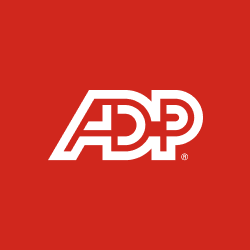The financial futures of many people working in Maryland may be in jeopardy. In fact, nearly one million private-sector employees lack access to an employer-sponsored retirement savings plan. To help address this problem, the state government created MarylandSaves.
Table of Contents
What is MarylandSaves?
MarylandSaves is a state-sponsored retirement savings program. Eligible employers are required to participate in the program or sponsor another qualified retirement savings plan, such as:
- 401(k)
- 403(a) qualified annuity plan
- 403(b) tax-sheltered annuity plan
- 408(k) simplified employee pension
- 408(p) SIMPLE IRA
- 457(b) governmental deferred compensation plan
How does MarylandSaves work?
MarylandSaves is a Roth Individual Retirement Account (IRA), which means it uses post-tax payroll deductions to help employees save for the future. The state sometimes refers to it as a WorkLife Account.
Enrollment
Employees are automatically enrolled in MarylandSaves within 30 days of joining a business that is registered for the program. Their participation is voluntary, so they may opt out and re-enroll at any time.
Contributions
The default contribution rate is 5%, but employees can change the rate whenever they choose. Options range from 1% to 100% as long as the total annual contributions are within IRS limits. If employees do nothing, the rate increases by 1% each year up to 10%. Employers are neither required, nor permitted to contribute.
Investments
MarylandSaves offers the following investment opportunities:
- Emergency savings fund
- Target retirement date options (2025-2065)
- Bond index option
- Global growth stock option
If employees choose not to customize their investments, their first $1,000 in contributions goes to the emergency savings fund and all subsequent contributions go to the target retirement date option.
Withdrawals
At any time, employees may withdraw contributions to their WorkLife Account without being taxed or penalized. However, the same cannot be said of earnings on their investments. Non-qualified distributions of earnings prior to age 59 ½ are taxed as income and subject to a 10% penalty.
Transfers
Rollovers from a WorkLife Account directly to another type of IRA are tax free and not subject to penalties. The IRS permits such transfers between IRA accounts once per year.
Administrative fees
The cost to administer MarylandSaves is paid for solely by employees. There is an annual asset fee of 0.18%, i.e., $0.18 for every $100 in an account, and an annual account fee of $30.

Which employers need to register and when?
Maryland employers who have been in business for at least two calendar years, employ at least one person and use an automated payroll system are required to register for MarylandSaves. The state will contact those who meet this criteria to let them know their registration deadline.
What if employers already offer another retirement plan?
Employers who sponsor a qualified retirement savings plan on their own are exempt from MarylandSaves. They can certify their exemption online using the access code provided to them by the state.
Which employees are eligible to participate in MarylandSaves?
MarylandSaves is open to employees who are 18 years of age or older and employed in Maryland. Their modified adjusted gross income (MAGI) cannot exceed the IRS limit for contributing to an IRA.
What are the benefits of MarylandSaves?
Retirement savings programs can help employers attract and retain talent, but some may not have the time or the resources to sponsor a plan on their own. Such businesses might find MarylandSaves appealing. It charges no fees to employers, has minimal administration and integrates easily with payroll systems. Employers who participate in the program are also eligible to have their $300 annual report filing fee waived by the Maryland Department of Assessment and Taxation.
How do businesses register for MarylandSaves?
Signing up for MarylandSaves is simple, but some basic information is required, including:
- Employer identification number (EIN)
- Access code provided by the state
- Payroll provider’s name, if using one
- Payroll schedule
- Bank account information
- Employee roster
How does MarylandSaves compare to other retirement plans?
ADP designs retirement plans that work better
| Features | MarylandSaves IRA | ADP 401(k) | ADP SIMPLE | ADP SEP |
|---|---|---|---|---|
| Auto Enroll | 5% | Available | Available | N/A |
| Auto Escalation | 1% annual increase on enrollment anniversary up to 10% | Available | N/A | N/A |
| Payroll Integration | Manual via website | Full integration | Full integration | N/A |
| Investment Option | Limited to 14 funds | Broad range of funds | 65+ options | 65+ options |
| Investment Advice | N/A | Available | Available | Available |
| Taxability | Roth after-tax contributions | Pretax & Roth contributions | Pretax contributions | Pretax contributions |
| Annual Contribution Limit | $7,500 employee contributions + $1.1K catchup (over 50) | $24,500 employee contributions + $8,000 catchup (over 50) + optional employer contributions | $17,000 employee contributions + $4,000 catchup (over 50) + employer contributions | 25% of total compensation up to $72,000 (all employer contributions) |
This information is intended to be used as a starting point in analyzing state-mandated retirement plans and is not a comprehensive resource of all requirements. It offers practical information concerning the subject matter and is provided with the understanding that ADP is not rendering legal or tax advice or other professional services.
Unless otherwise agreed in writing with a client, ADP, Inc. and its affiliates (ADP) do not endorse or recommend specific investment companies or products, financial advisors or service providers; engage or compensate any financial advisor or firm for the provision of advice; offer financial, investment, tax or legal advice or management services; or serve in a fiduciary capacity with respect to retirement plans. All ADP companies identified are affiliated companies.
ADP, Inc. is affiliated with ADP Broker-Dealer, Inc. (“ADP BD”), a limited purpose broker dealer registered with the Financial Industry Regulatory Authority (“FINRA”), and operating pursuant to Securities and Exchange Commission (“SEC”) Rule 15c3-3(k)(2)(i), approved by FINRA to offer 401(k) and SEP/ SIMPLE IRAs, and related retirement plans (the “Retirement Products”) on a payroll deduction basis.



